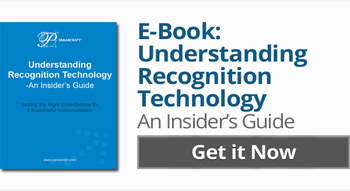When it comes to automated recognition technology, there are 2 common misconceptions about expected results that can be easily solved with tuning.
Misconception #1: All items in a stream are equally hard to read, both automatically and manually
The items that cause the most errors and rejects are not random. In fact, the items that have the biggest chance to be rejected are those that are the least standard and most difficult to read. This applies to both automated and human verification. This means that it would require more effort to key a rejected item than an average item in a stream, and operators would make more errors on rejected items than on the whole stream of documents. Therefore, it would be wrong to assume that a rejected item could be recognized equally as well as an average item.
This issue can be solved by tuning the recognition engines specifically for the particular goal of the application. For example, to efficiently read big numbers (such as a 10-digit account number) in a stream of documents, the engine will be tuned so that small numeric numbers (having for example 3 digits) that occur in the stream are likely to be rejected. If the goal of the application is different, for example to detect all small numbers in the stream, it would be inefficient to use the engine tuned for the case described above. The engine should be tuned differently to specifically serve to this goal: detecting small numbers. There are methods and approaches that can be used to detect items that meet the particular goal of the application and will make the solution usable and efficient.
Misconception #2: Recognizing values first, using rules and context second
It is usually easier to solve the problem of detecting whether certain values meet specified conditions than to recognize the values themselves. For example, recognition engines may be unable to read the value of a particular character in an image, but if the main goal of the application is other than to correctly recognize each character, it will still be able to come up with a confident and correct answer that meets the needs of the application. For example, the task of detecting CAR/LAR mismatch on a check will be solved more efficiently if the engine is specifically targeted to finding a discrepancy between these two fields, instead of reading the contents of each field and then trying to compare the results from each (CAR and LAR). The latter case will more likely contain more errors. Another example of using rules and context to improve recognition is when there is additional input from other sources, such as in the case of mobile deposits where the amount is keyed by the user. Recognition engines would be able to provide better answers using this information during the recognition process.
This is especially important if the error rates tolerated by the application are much lower than the error rates that can be achieved with automatic recognition or manual keying. Using recognition with higher error rate as a basic building block for any solution which has much lower error tolerance may result in a very unstable solution. On the other hand, addressing the target condition directly usually results in a much more efficient and more robust solution.

